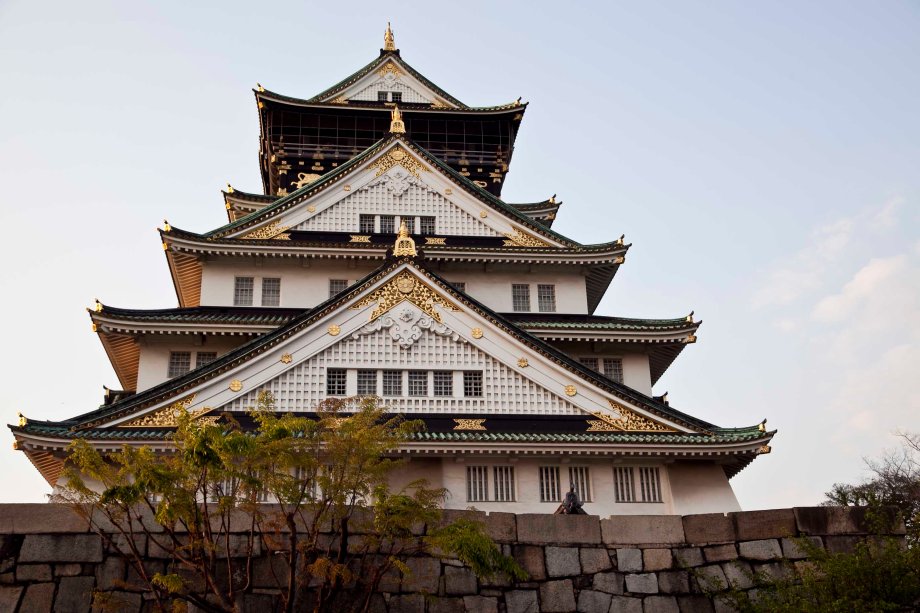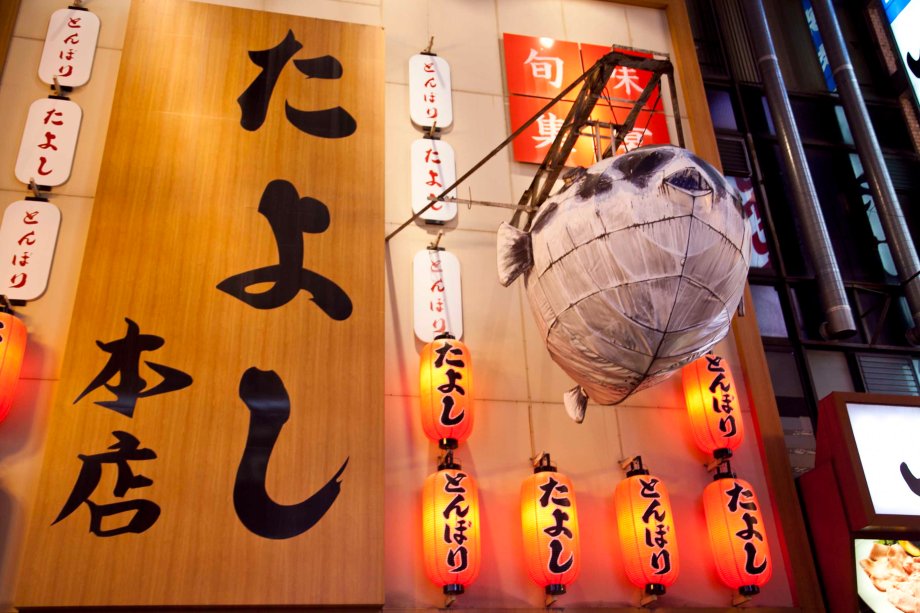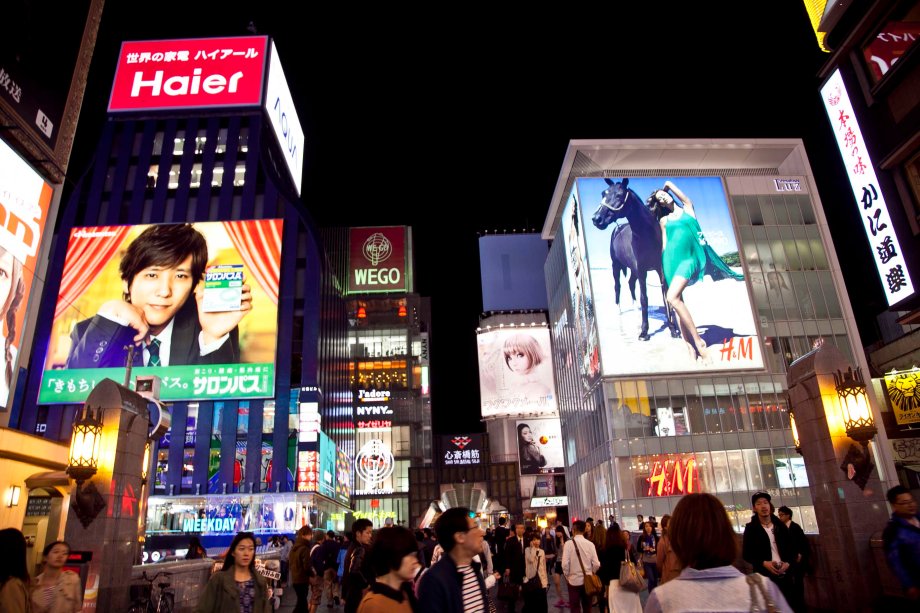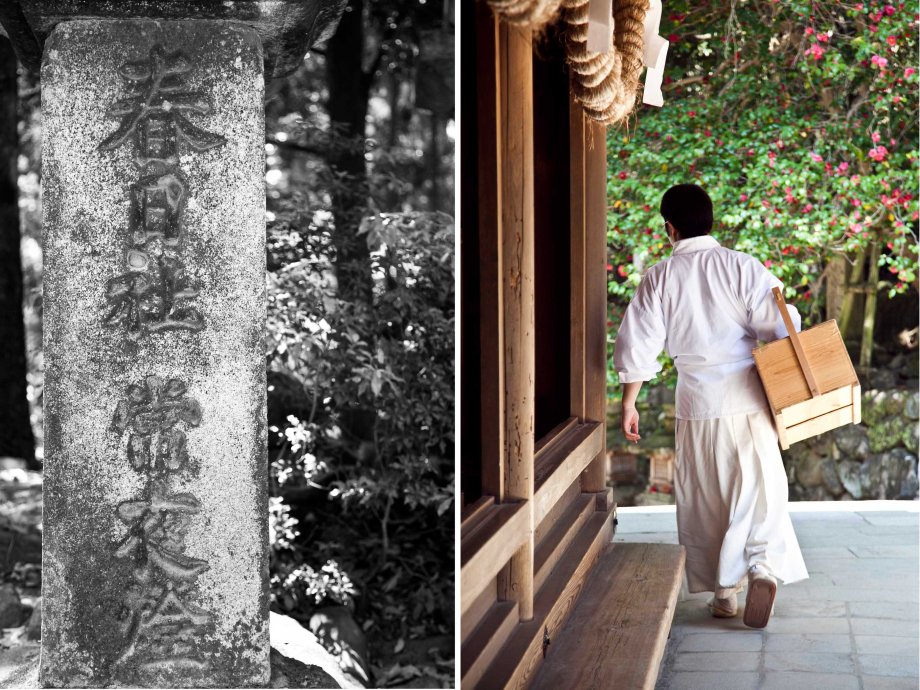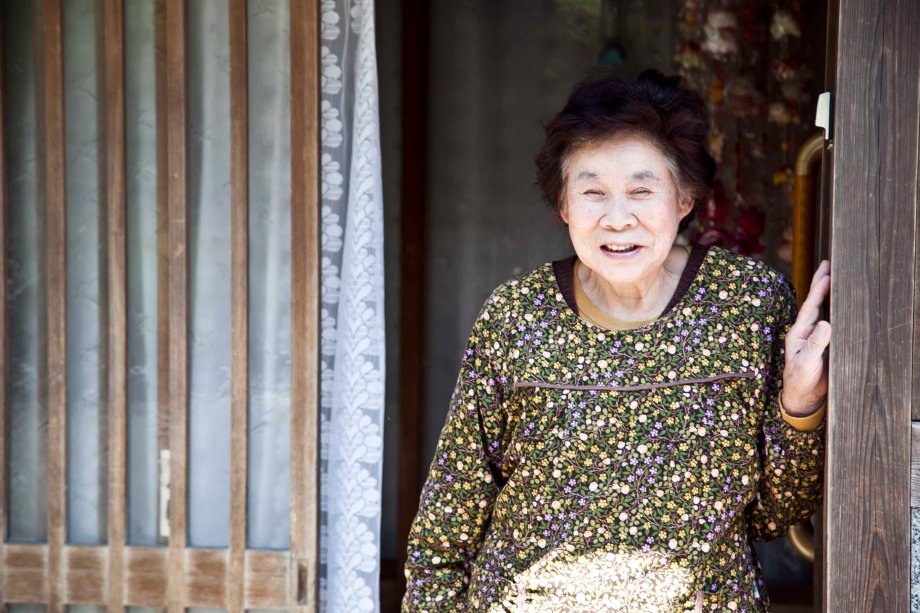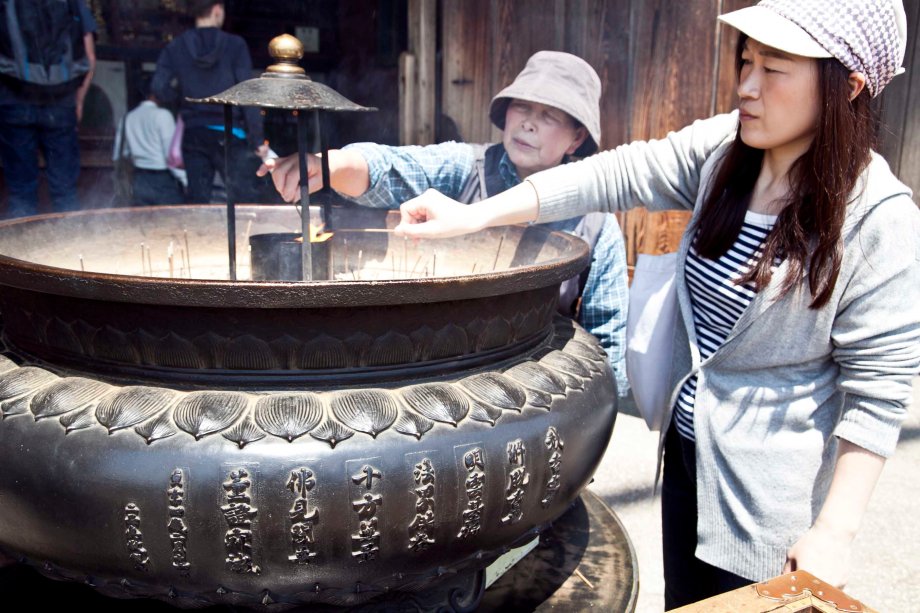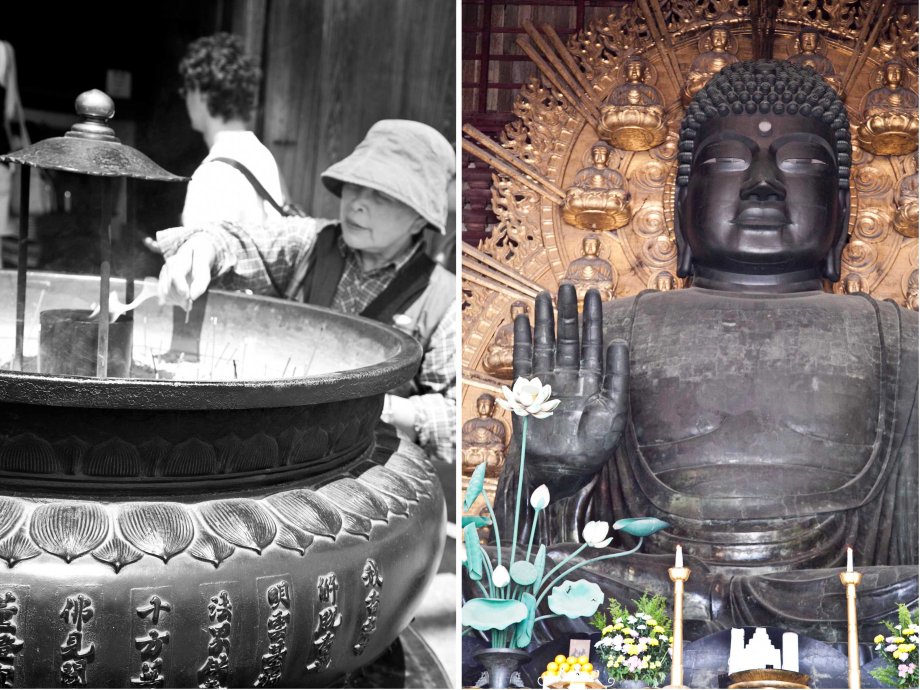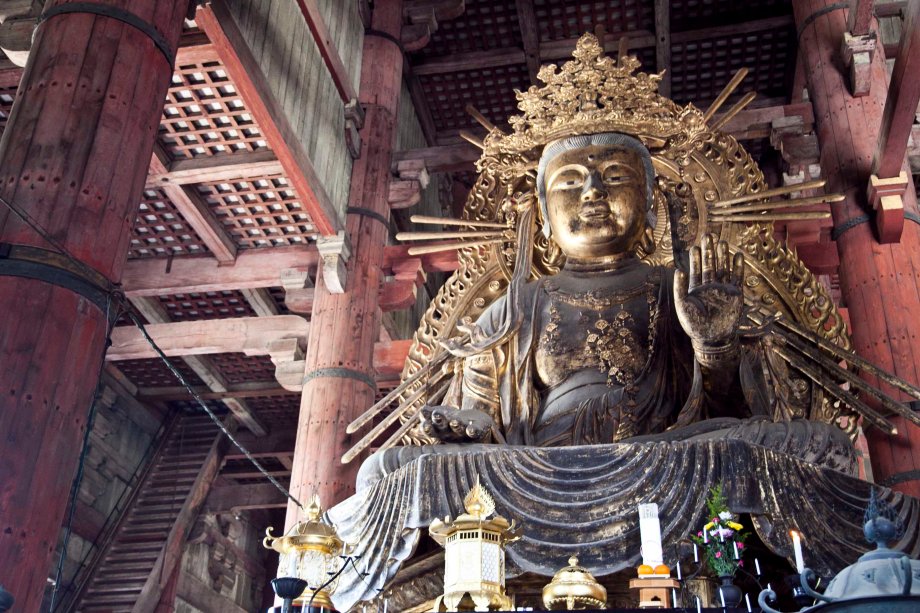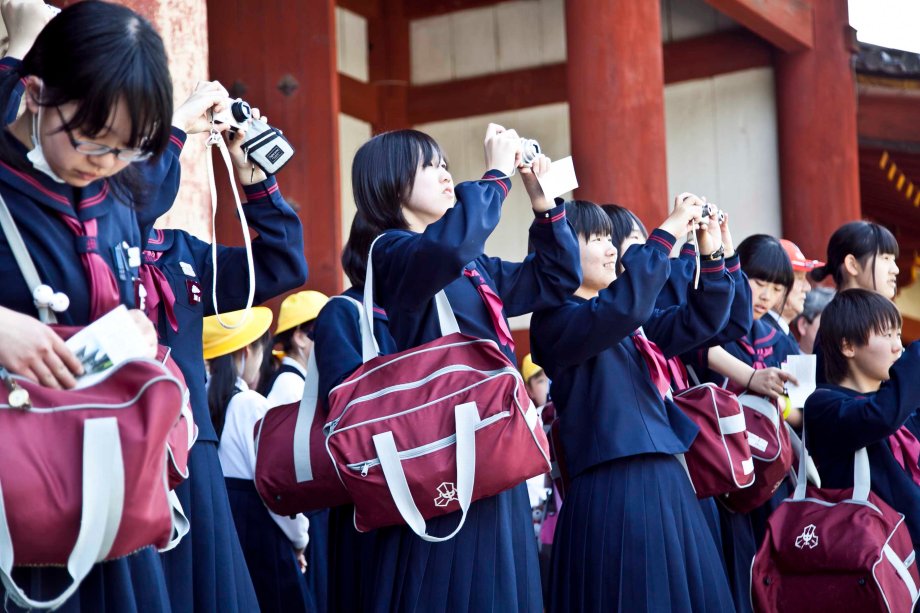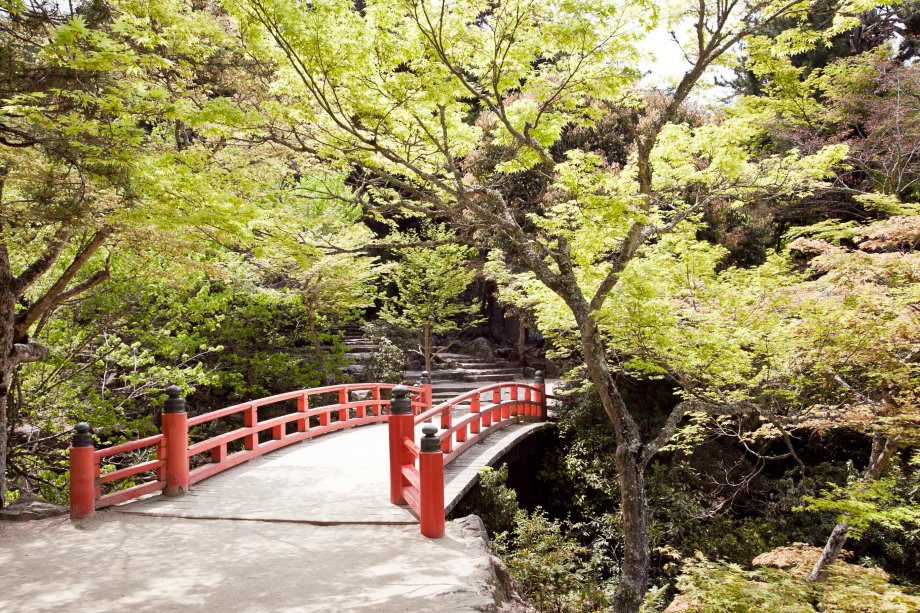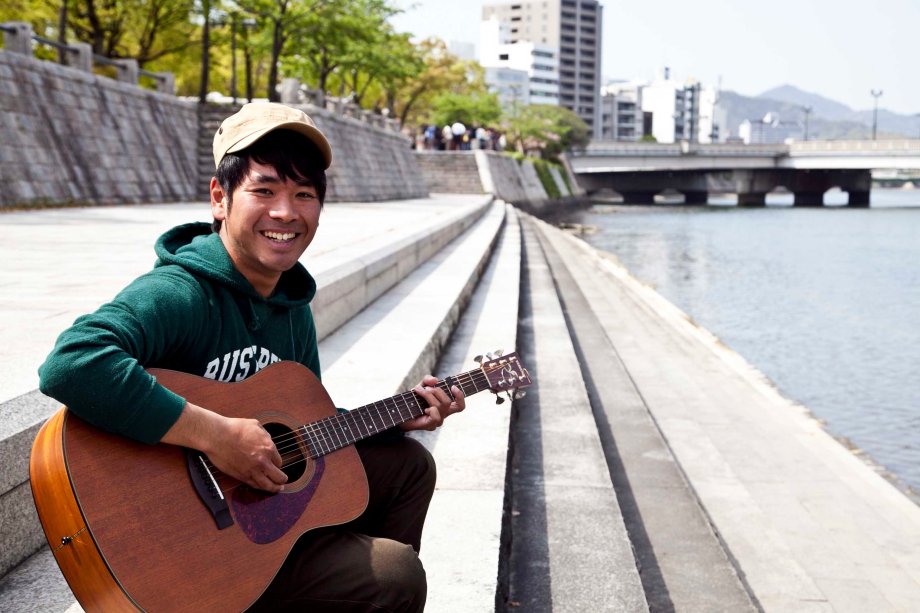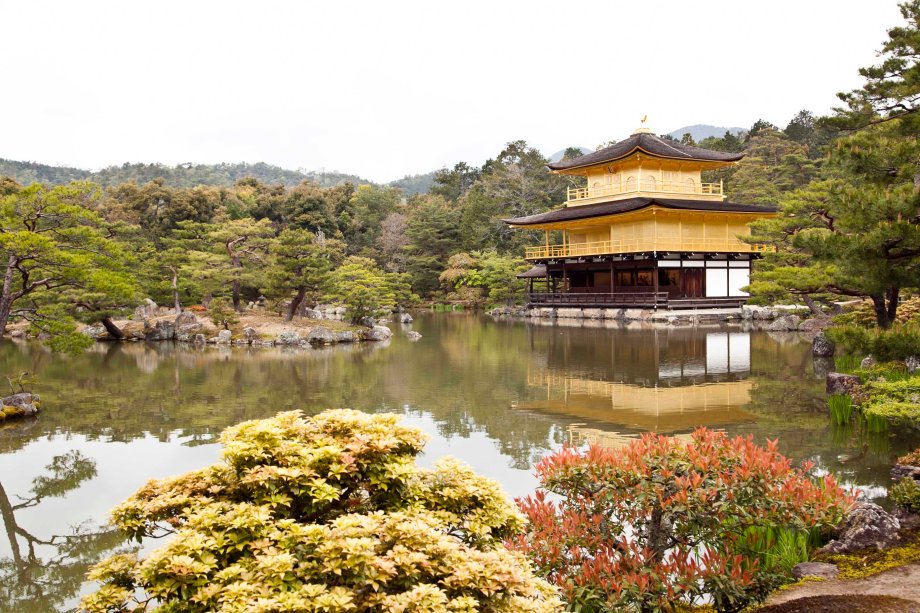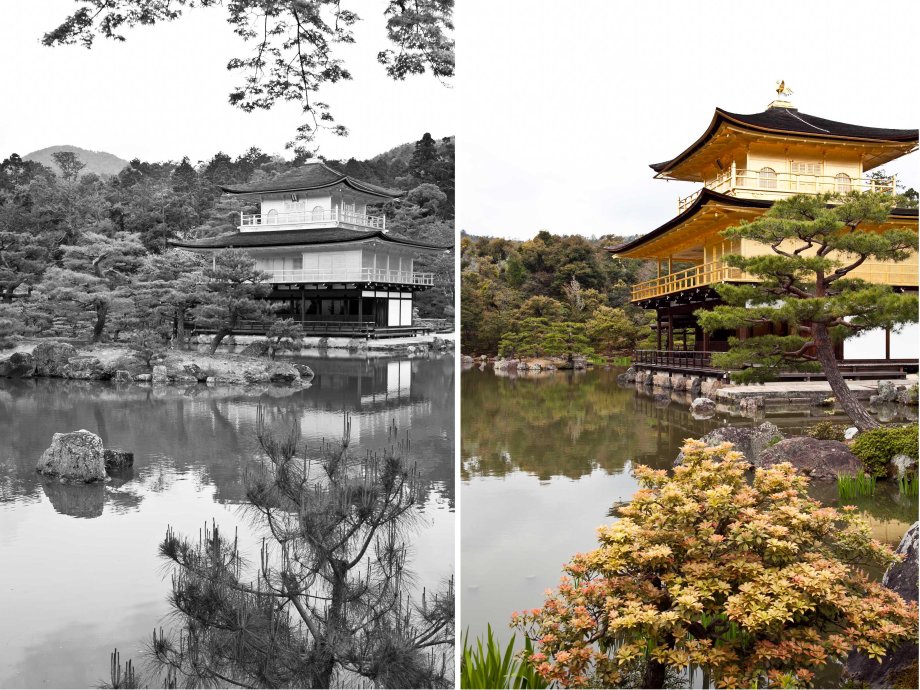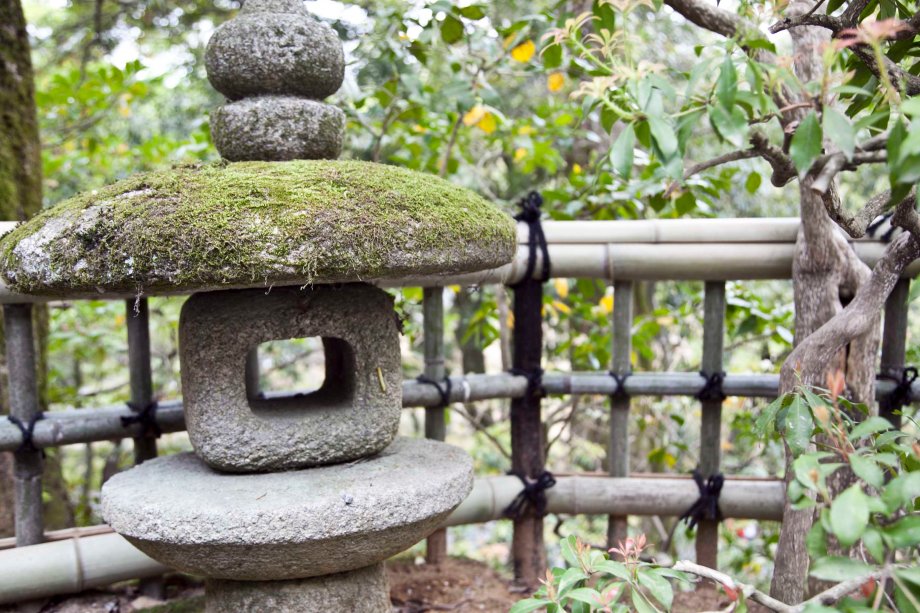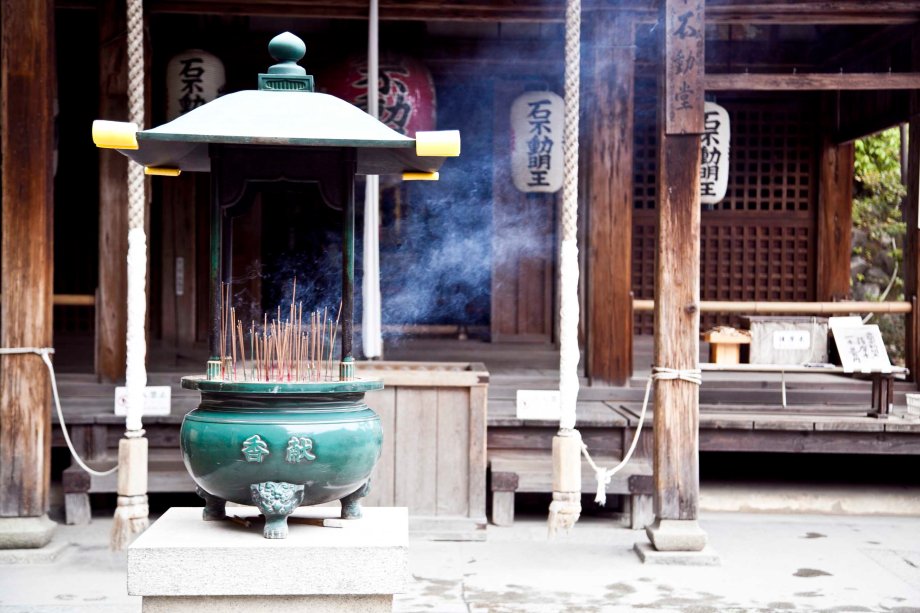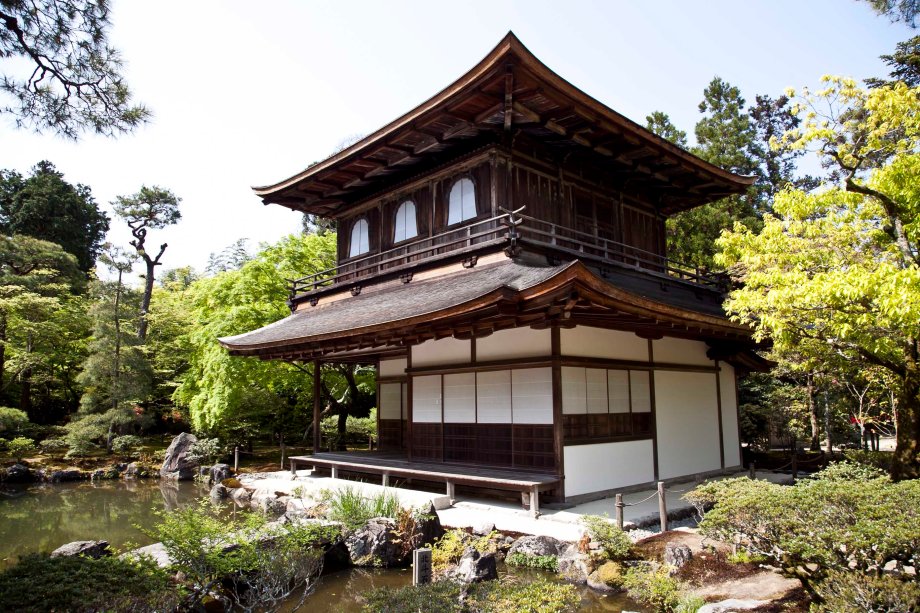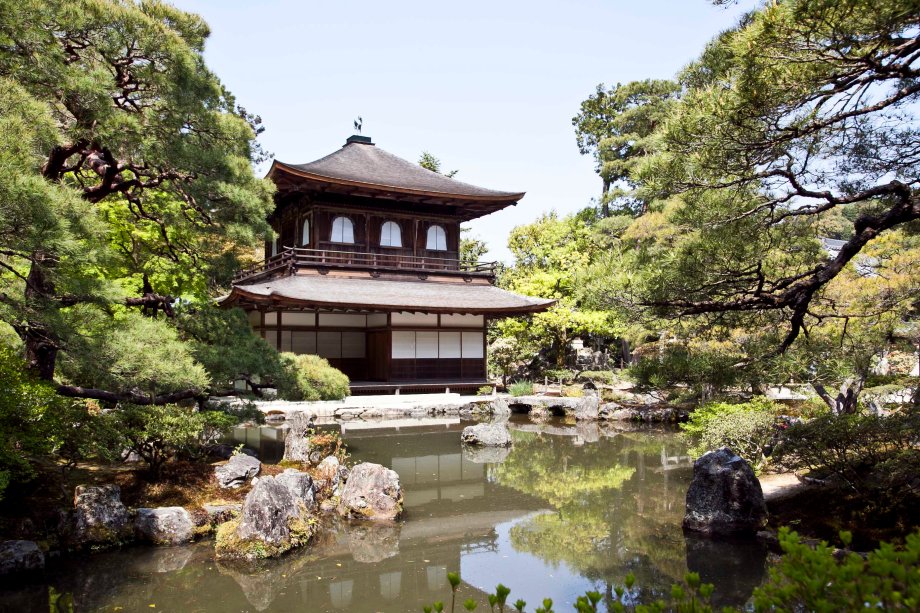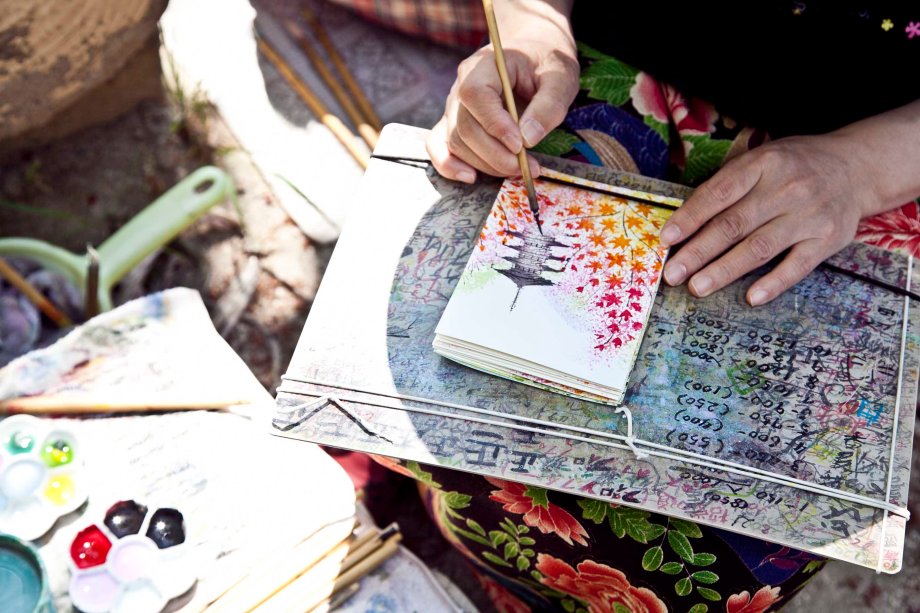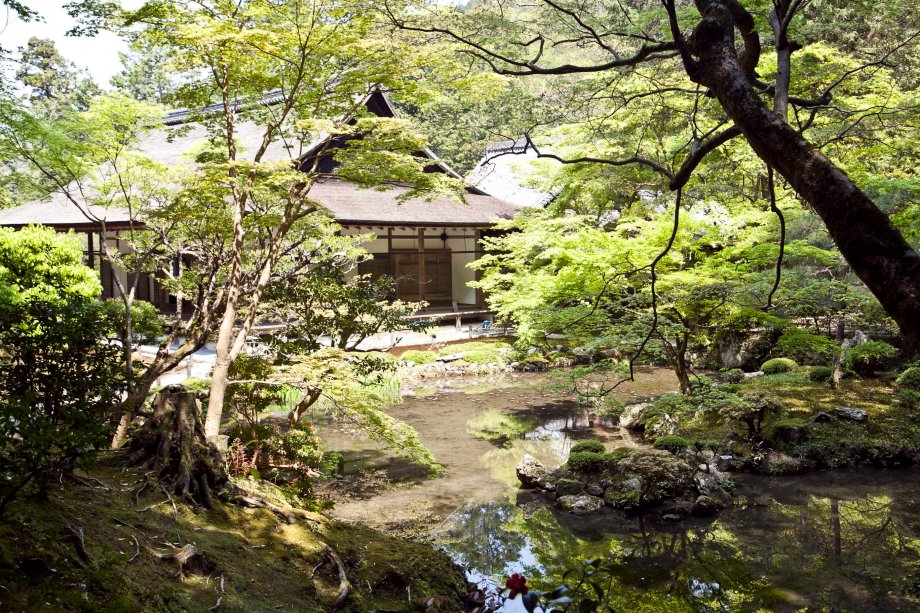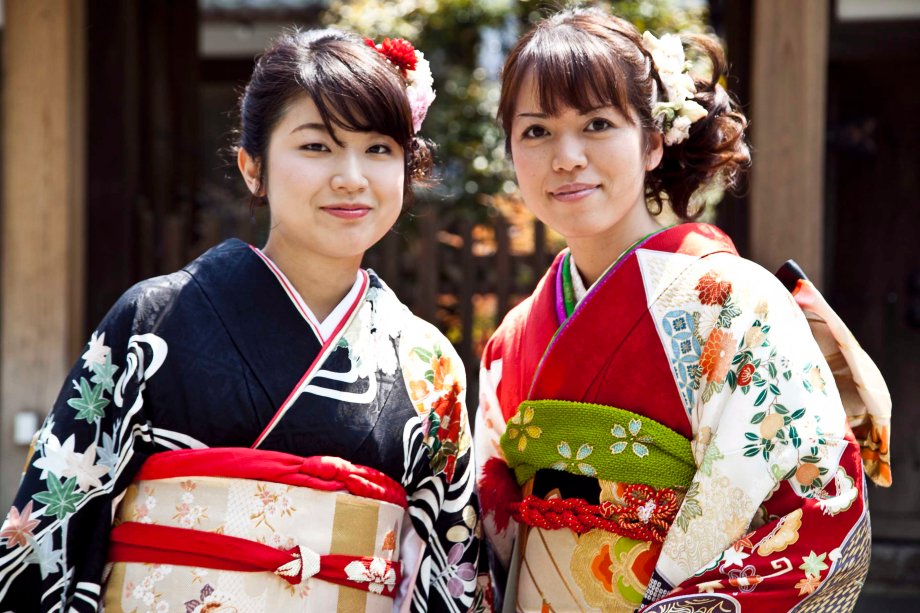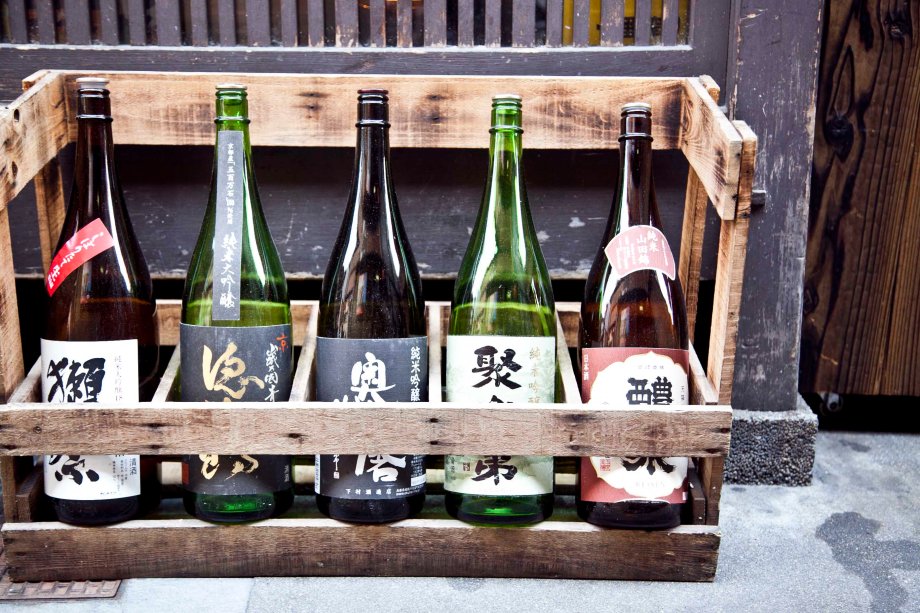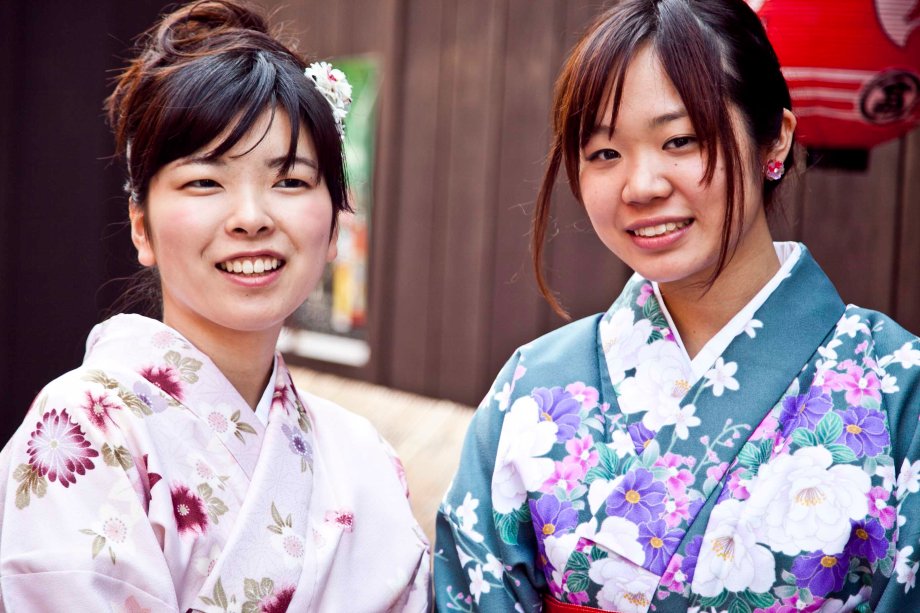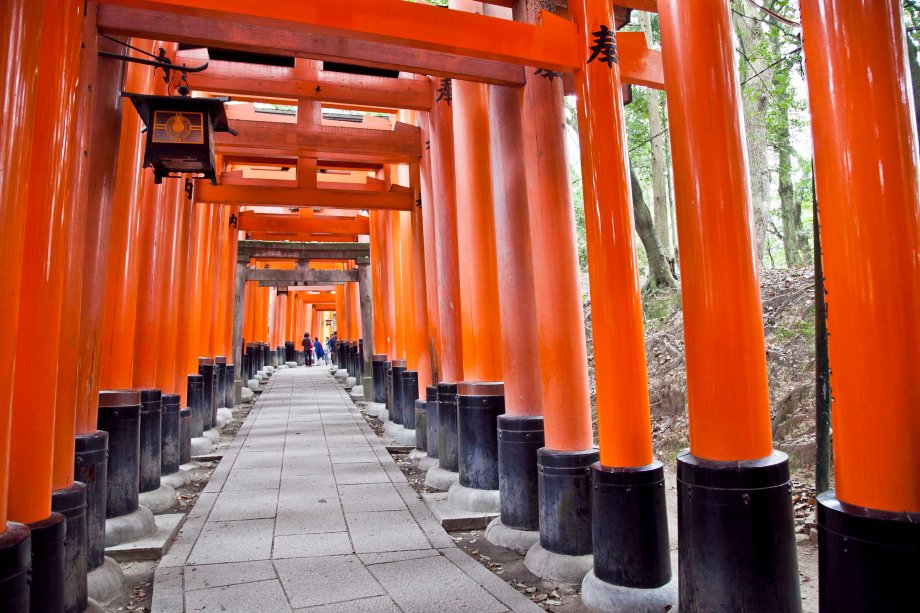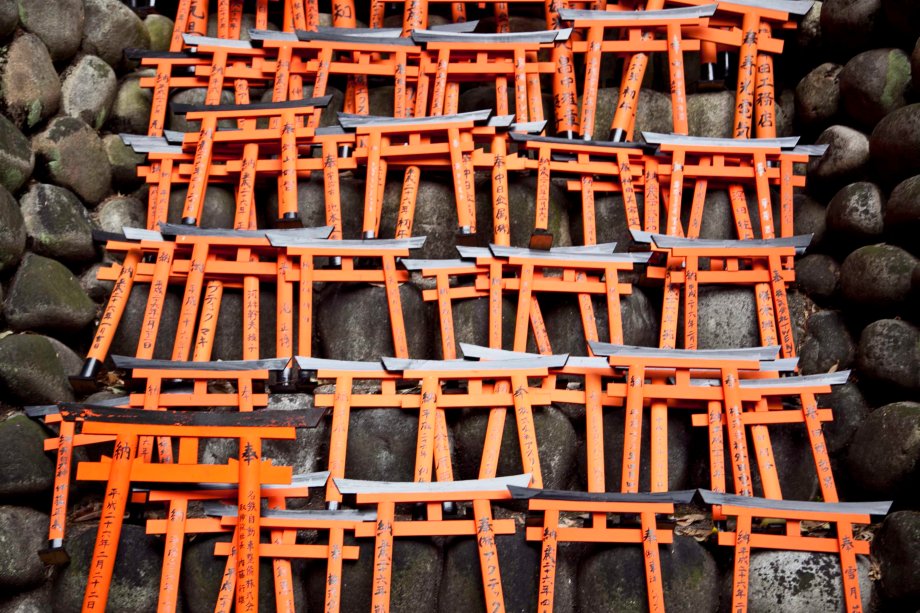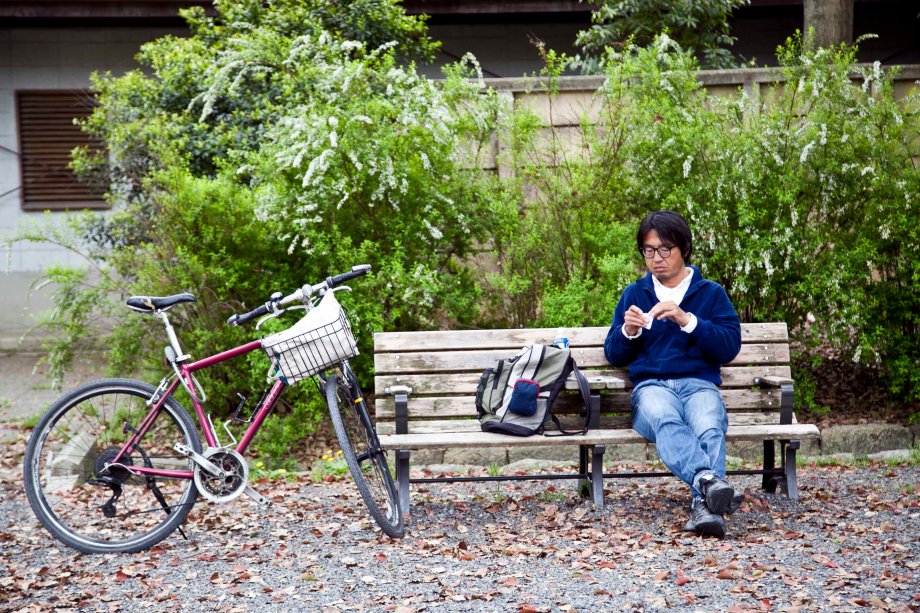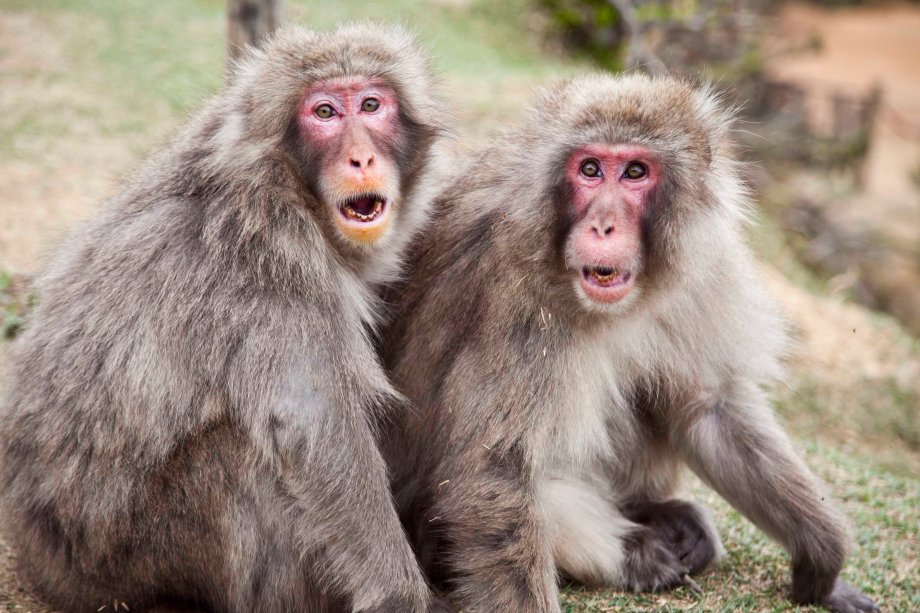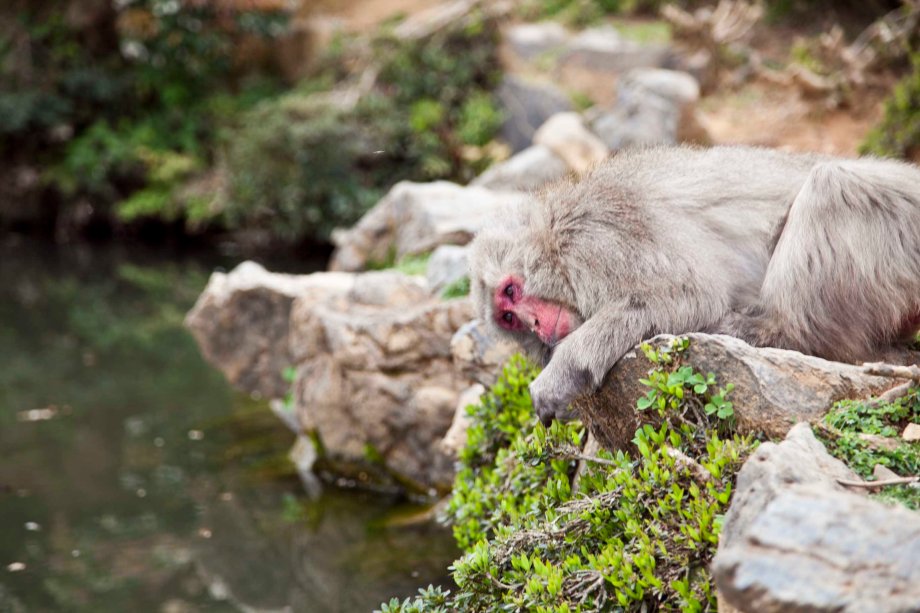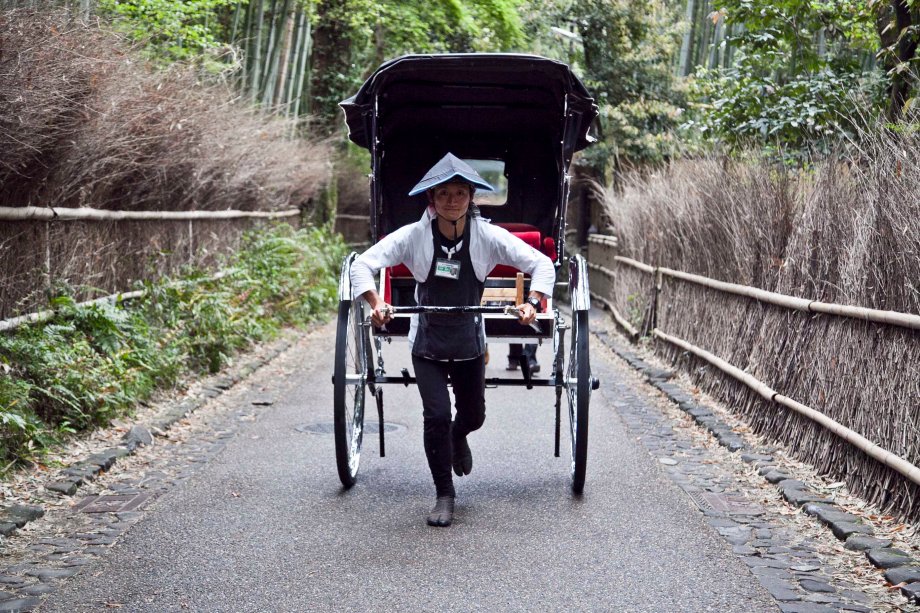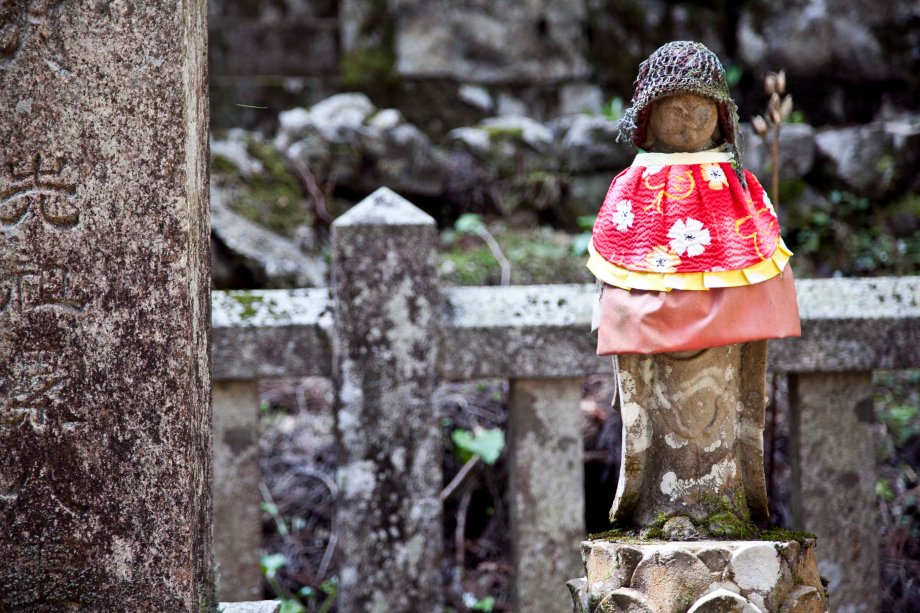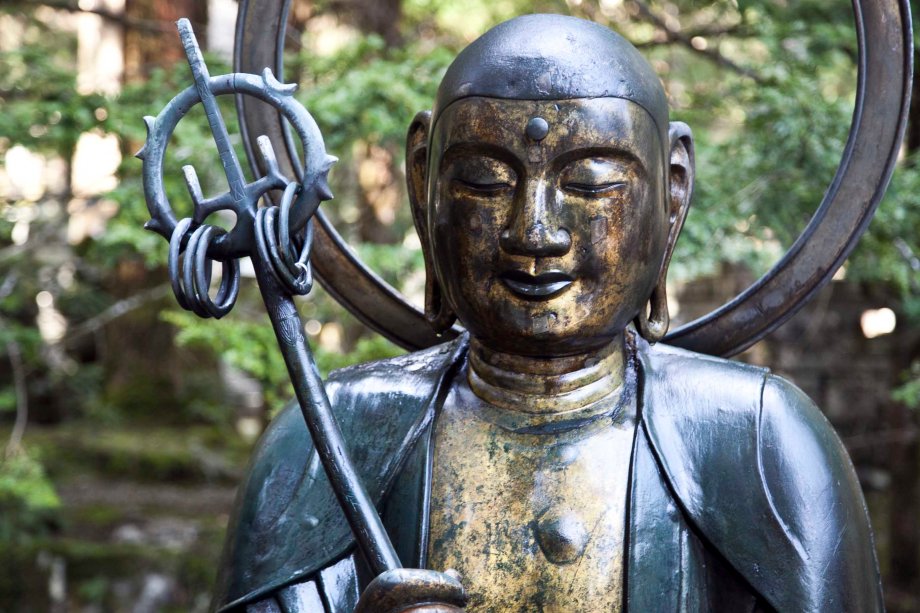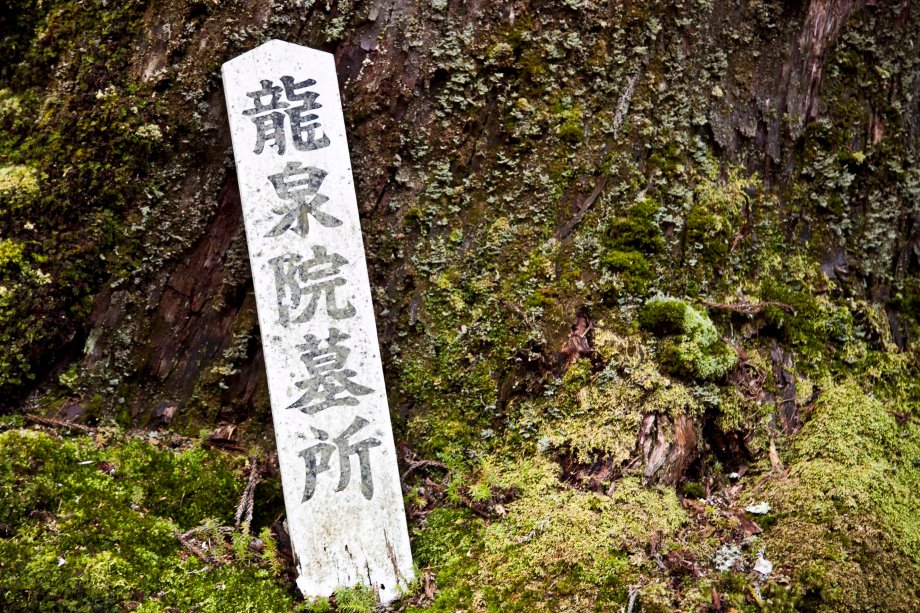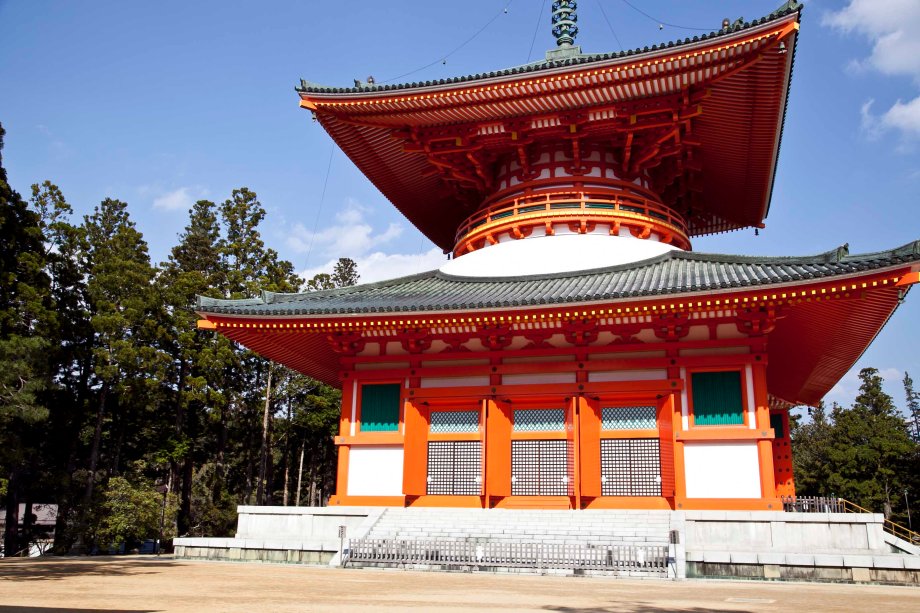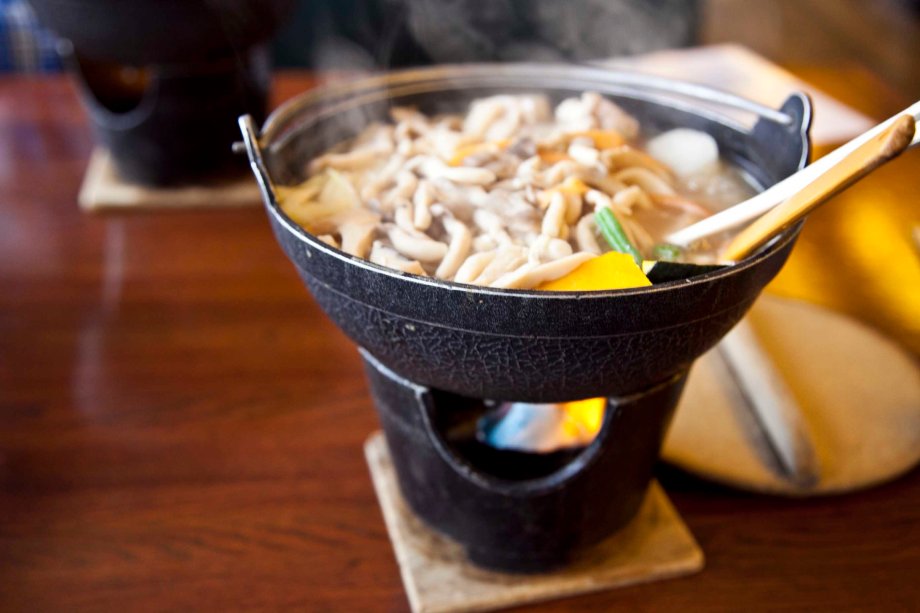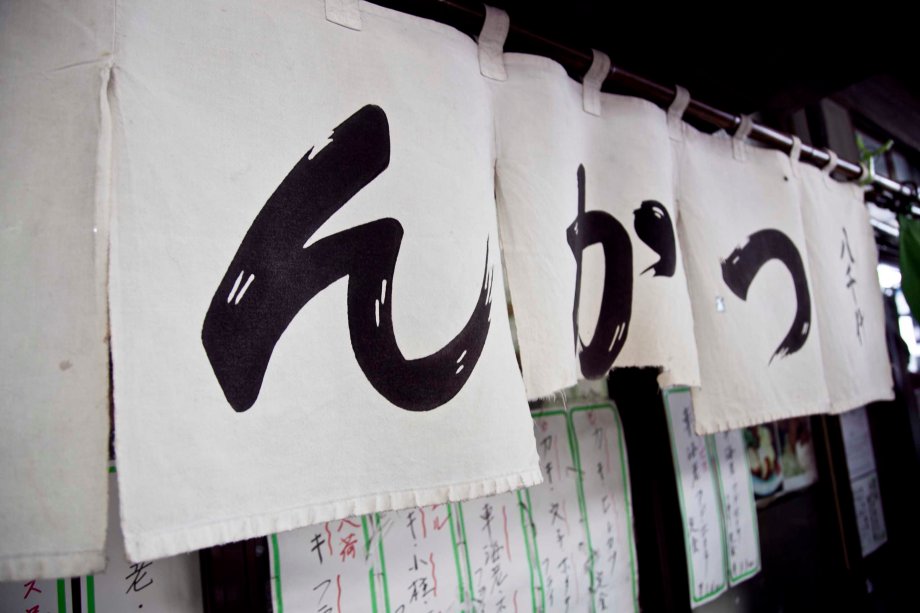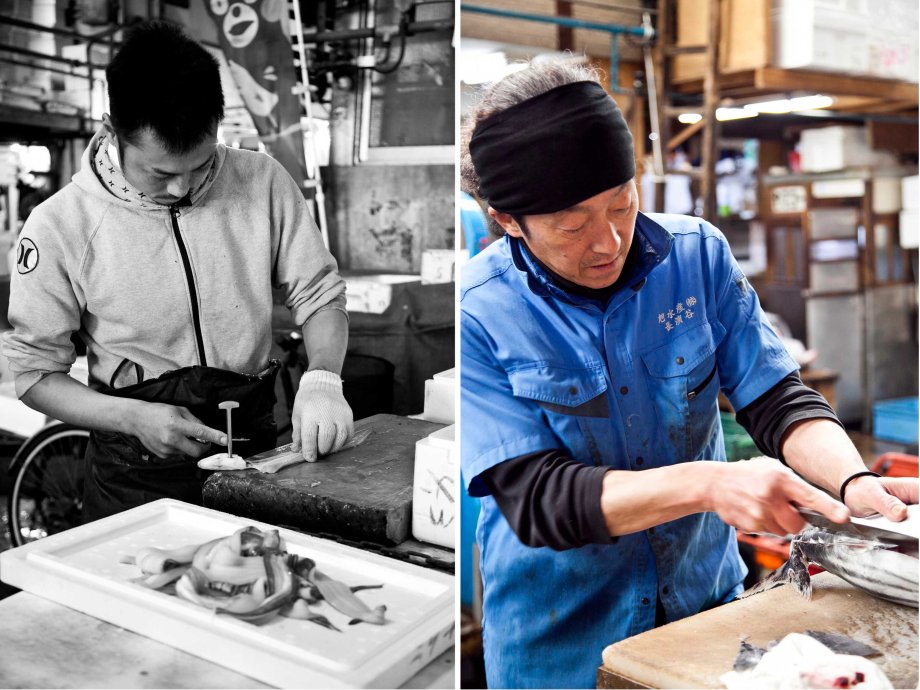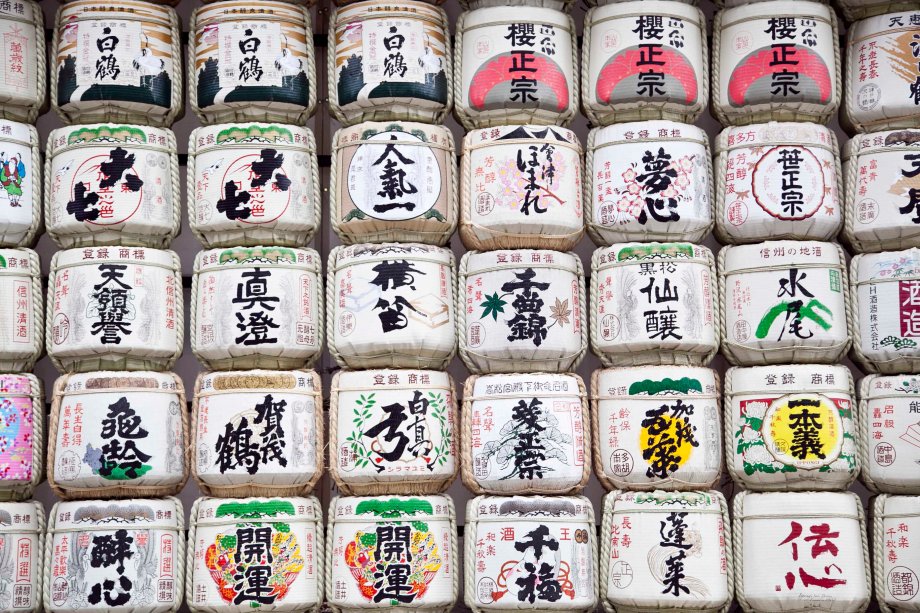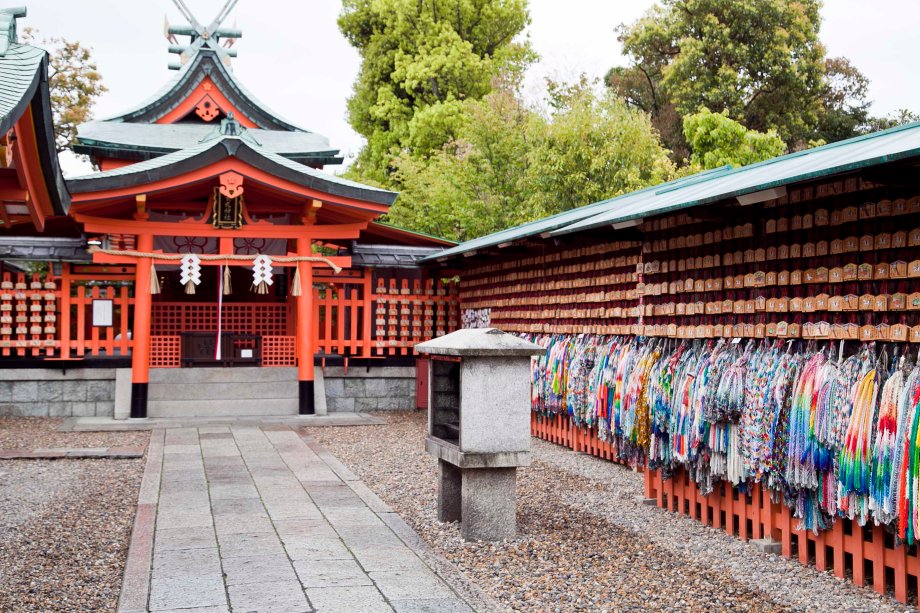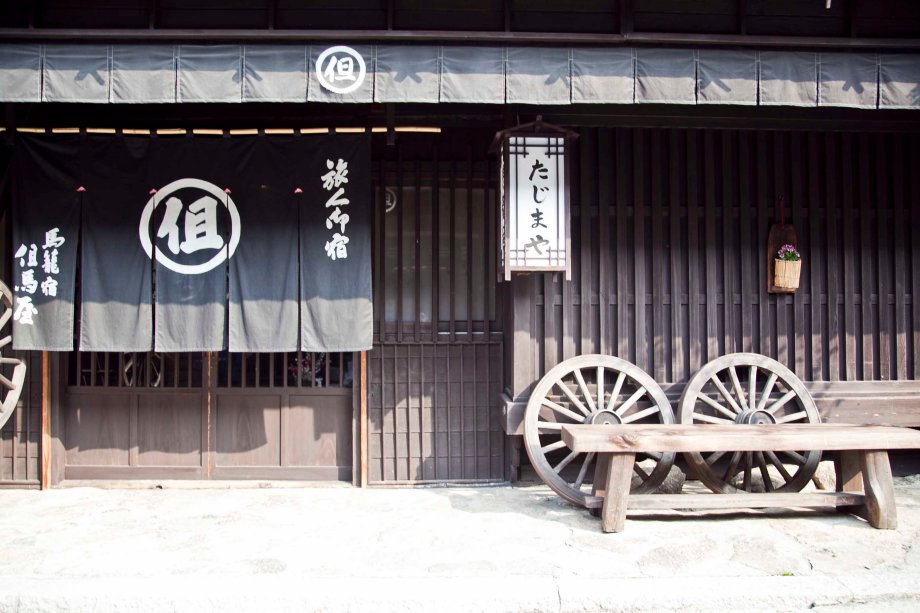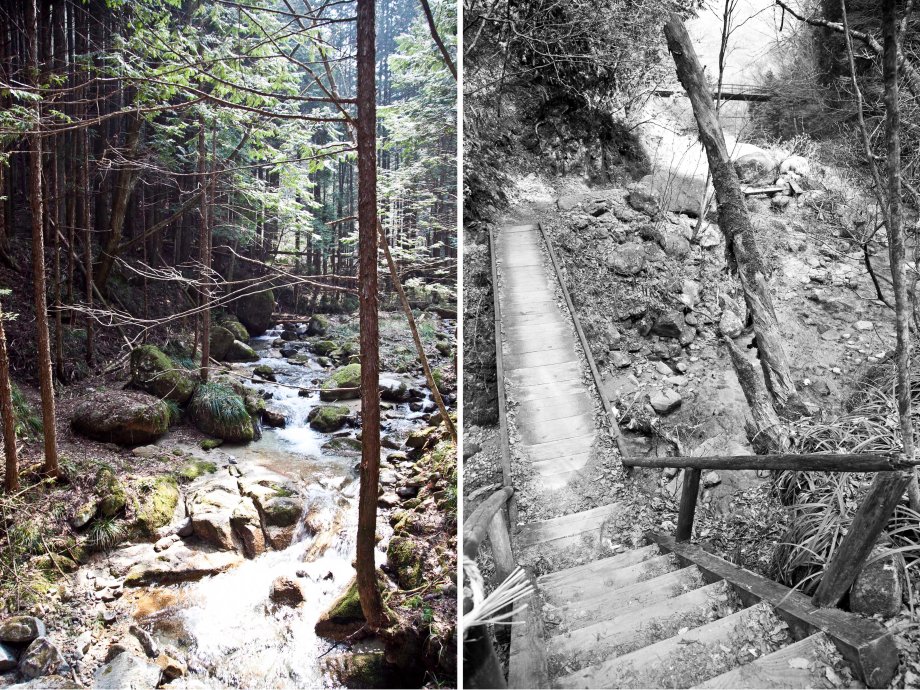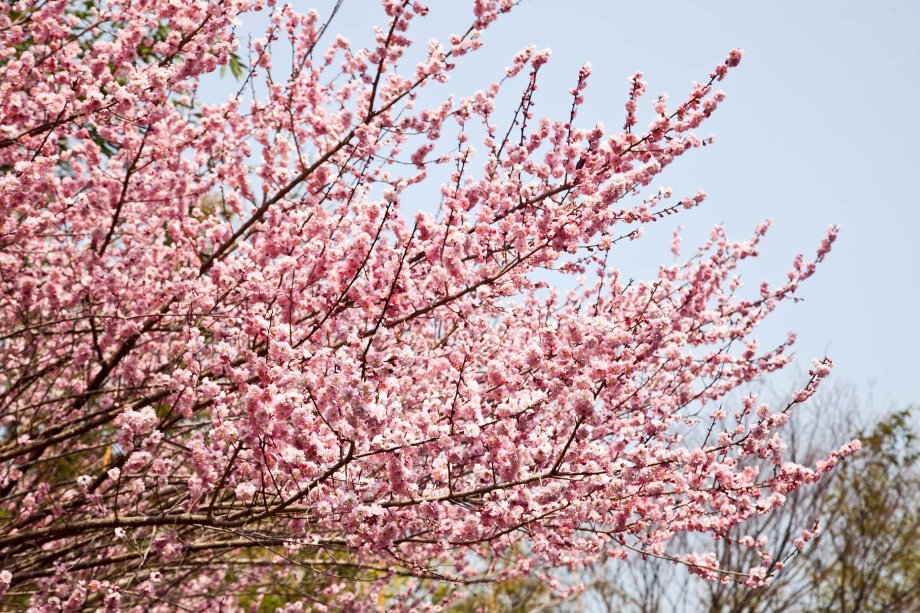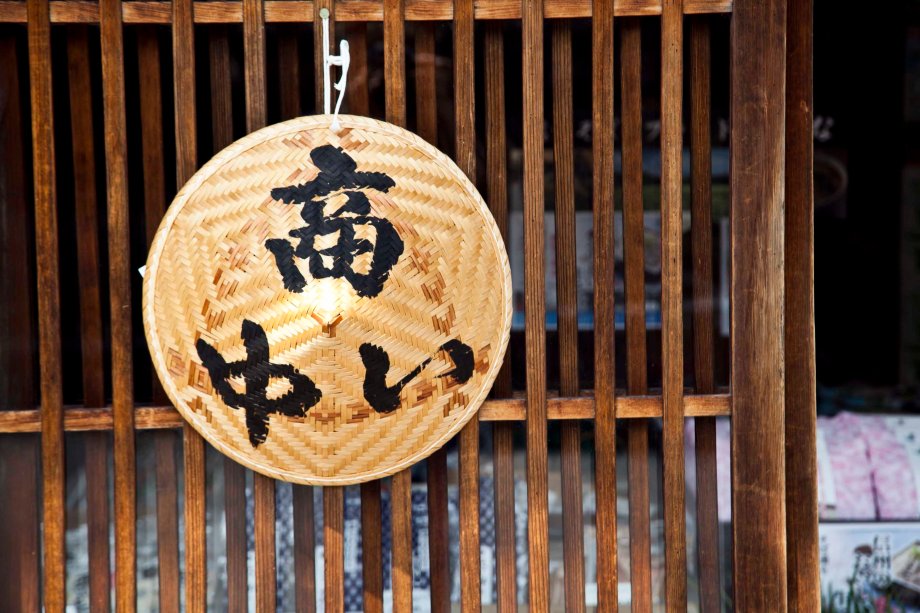Our final destination in Japan was Osaka. We didn’t leave much time for Osaka, only an afternoon/evening, but we were glad that we at least spared a little time for this big cosmopolitan city. We made the good decision to visit Osaka Castle late that afternoon – the place was just magical in that late afternoon golden glow. The park surrounding the castle was full of life – people jogging, taking a leisurely stroll, playing with their children, or simply sitting beneath a tree and reading a good book. As you can see by the photos, Osaka castle is absolutely spectacular perched atop the city. We were unfortunate to arrive too late to go inside, but exterior was just incredible!
Later that evening, we headed to where it all happens in Osaka – to Dotonbori Street. This is the central night-life district of Osaka and it is buzzing with people at all hours of the evening. Dotonbori Street is also a great place to grab a bite to each, as there are more restaurants than you wish to chose from, selling everything from crab, to noodles, dumplings, basically any type of Japanese cuisine. It’s one of those places that you have to experience at least once.
Well, that’s it from Japan. Heading to Kakadu National Park next weekend, so stay tuned for some posts shortly.
Essentials:
Getting There:
Osaka is well connected by rail to many places throughout Japan. There is also an international airport at Kansai (about 30-45 minute train trip from Osaka Central Station). Osaka also has an excellent subway network connecting almost all areas of the city.
Stay:
We stayed at Yamatoya Hoten, located conveniently close to Dotonbori Street (about 50m away, if that). The rooms were Japanese styled ryokan rooms and we very clean and tidy.
Visit:
Dotonbori Street and Osaka Castle are at the top of the list.







